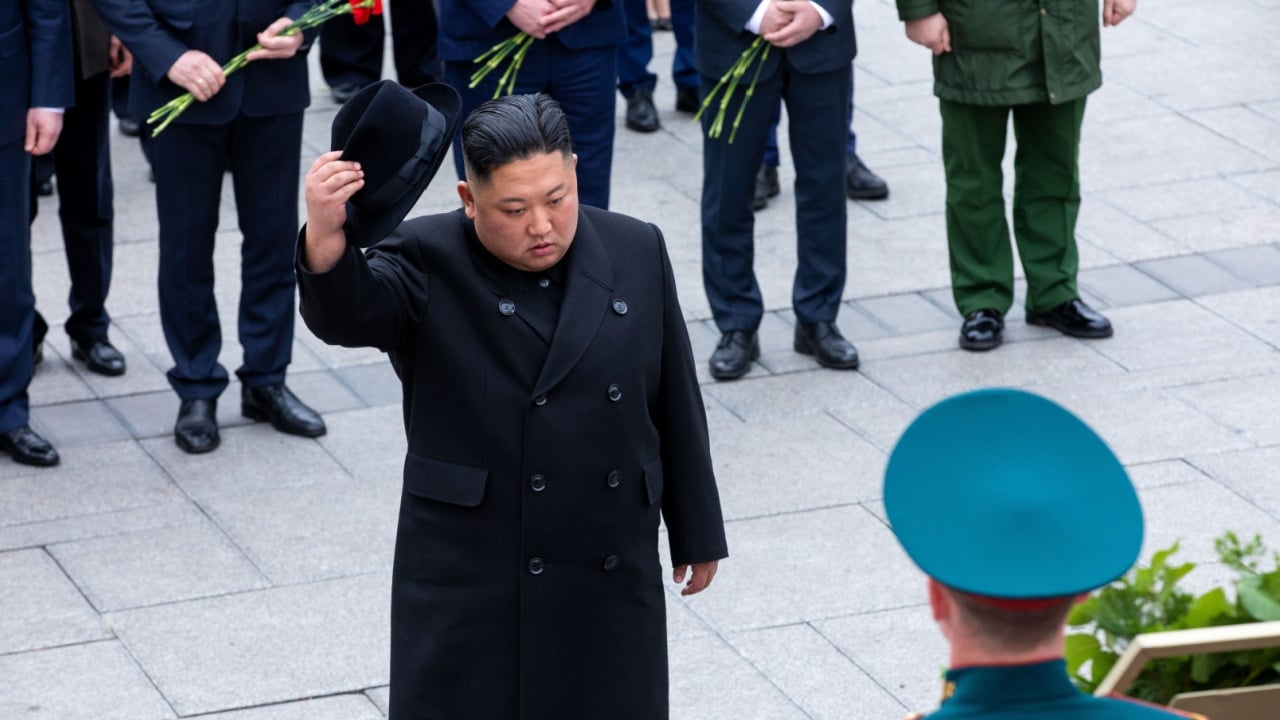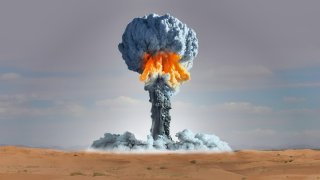South Korea's Nuclear Weapons Debate: A Third Way Forward?
Becoming a threshold state, rather than developing a nuclear deterrent outright or continuing to rely on the U.S. umbrella, may be the ROK’s best option.
The debate over nuclear armaments in South Korea is growing more significant and polarizing. Two main strategies dominate the conversation. The first strategy is to achieve independent deterrence against North Korea through an independent nuclear program. The second strategy focuses on strengthening the U.S. nuclear umbrella, including measures like nuclear sharing, redeployment of tactical nuclear weapons, and deepening extended deterrence. This strategy was further crystalized in the U.S.-South Korean joint nuclear deterrence guidelines on Conventional-Nuclear Integration (CNI) during the NATO summit.

Recent polls show that 71 percent of South Koreans support developing a domestic nuclear arsenal, driven by concerns over North Korea’s nuclear capabilities and its growing military cooperation with Russia.
At the same time, conservative politicians, such as Governor Kyung Won Na, advocate for a nuclear program. According to this view, South Korea must equip itself with nuclear weapons to ensure national security and respond to potential threats independently.
However, significant opposition remains, with many strategic elites and policymakers favoring strengthened defense mechanisms and reliance on the U.S. security umbrella. They believe that South Korea’s conventional military capabilities, along with U.S. support, provide adequate deterrence and warn that nuclear development could lead to international sanctions, hinder the U.S.-South Korean alliance, and provoke a regional arms race.
A More Acceptable Alternative for South Korea
Considering the ongoing debates in Korea, I propose a third option: acquiring a more robust uranium enrichment and nuclear reprocessing technology (ENR) for increased nuclear latency. Given its high deterrence capabilities, South Korea should seriously consider achieving nuclear latency through ENR. This would allow it to develop the potential to produce nuclear weapons without actually doing so, thereby not violating the Nuclear Non-Proliferation Treaty (NPT), a strategy successfully implemented by Japan.
ENR can itself provide significant deterrence capabilities. The fact that a nation already possesses the components and knowledge to build nuclear weapons but has not yet assembled or deployed them highlights its enormous potential. States with potential nuclear latency can implement a “delayed” nuclear counterattack strategy. This means that if such a state is attacked, it could launch a nuclear strike within weeks or months, thereby deterring the initial aggression. Although there is a delay, this approach functions similarly to the deterrence mechanisms used by fully nuclear-armed states. Additionally, opponents like North Korea might hesitate to attack such a state with nuclear latency, fearing it could hasten the completion of South Korea’s nuclear program.
For these deterrence mechanisms to function, the key lies in balancing clarity and ambiguity. The opponent, including North Korea, must be aware of South Korea’s ENR capability. Secretly securing ENR and keeping it highly confidential will not provide any deterrence effect. However, the opponent must be uncertain whether the state will eventually develop nuclear weapons. Absolute clarity that nuclear weapons will never be developed or will certainly be developed undermines the deterrence mechanisms. It is essential to be clear about having a secure ENR program but remain ambiguous about whether the state will fully develop nuclear weapons, indicating that this decision depends on the opponent’s actions. Thus, it would be crucial for South Korea to signal North Korea about its nuclear latency, but at the same time, find a balance with the United States to increase transparency and inspection of Korea’s ENR facilities.
However, the challenge lies in the practical limitations and hardships during the process of achieving nuclear latency and in the diplomatic direction post-armament. It is not only about avoiding economic damage from sanctions and pressure but also developing a new framework of foreign policy.
A Thin Tightrope: Between the United States and China
One concern is whether South Korea is adequately prepared to navigate the balance between the United States and China, given its foreign policy’s inconsistency. South Korea’s approach has fluctuated with different administrations: conservative governments typically strengthen ties with the United States and like-minded states. In contrast, progressive administrations aim to balance relations by improving ties with China alongside maintaining the U.S. alliance and engaging with North Korea. This inconsistency can create challenges for long-term strategic planning when approaching Washington. If the United States were to permit South Korea’s nuclear latency, it would likely come with conditions to follow its China policy. South Korea should consider whether this is acceptable.
Additionally, public trust in the South Korean government’s policies is below the OECD average, with domestic discourse deeply divided. Given the highly polarized political environment in South Korea, it will be extremely challenging for any administration to gain public acceptance for transformative foreign or nuclear policies. At the same time, it is crucial to establish legal frameworks, as conflicts with residents are likely to occur during the planning and construction of nuclear facilities. Currently, South Korea lacks legislation related to high-level radioactive waste storage.
To acquire ENR capabilities, laws governing the transport and storage of high-level radioactive waste, including laws like the “High-Level Radioactive Waste Management Special Act, " are necessary. While strengthening deterrence against North Korea, which is directly linked to South Korea’s survival, is critical, the lack of consideration of these issues in current discussions on nuclear policies is concerning.
Considering these concerns, the South Korean government should take considerate but bold two-track steps to reach the level of effective nuclear latency through ENR. Currently, the South Korean government’s nuclear regime falls under the “Agreement for Peaceful Nuclear Cooperation.”
The United States initially completely banned uranium enrichment in South Korea. However, the 2015 amendment of the U.S.-Korea Nuclear Cooperation Agreement permitted South Korea to enrich uranium to less than 20 percent with U.S. consent while still prohibiting the reprocessing of spent nuclear fuel or highly enriched uranium. Still, this is not enough for acquiring nuclear latency, considering that 90 percent enrichment is required for weapons-grade uranium. Thus, for South Korea to acquire more proactive ENR capabilities, amending the U.S.-ROK nuclear agreement to increase enrichment above 20 percent would be necessary.
Appeals to the Global Community
Simultaneously, to ensure the negotiation with the United States proceeds smoothly, it is crucial to continue building bilateral trust through increased transparency and adherence to international norms. Japan’s fifteen-to-twenty-year approach, characterized by increased transparency and ongoing improvements in nuclear technology, serves as a valuable model for South Korea. By openly addressing and refining their capabilities related to centrifuge and reprocessing technology in the Tokai reprocessing plant, Japan has secured international allies and built trust, demonstrating the importance of transparency and strategic planning.
Seoul can also implement it by following and updating information via the U.S.-South Korean Nuclear Consultative Group (NCG) and the International Atomic Energy Agency (IAEA) ’s Model Additional Protocol. Once a long-term trust-building process has been adequately established, South Korea can begin to request further nuclear development.
As a nation that prioritizes nonproliferation, the United States already has valid reasons to deny South Korea’s request. However, current geopolitical tensions present challenges to the U.S.-backed status quo. The Department of Defense’s (DoD) 2023 annual report on Chinese military power notes that China’s current nuclear modernization efforts “surpass previous attempts in both scale and complexity.”
While the direction of China’s nuclear modernization remains a topic of ongoing debate, its qualitative and quantitative expansion undeniably increases the complexity of a nuclear threat. Due to these emerging nuclear threats, along with North Korean and Russian military cooperation, the United States’ need for a new nuclear deterrence strategy in the Indo-Pacific is rising. This is where cooperation with U.S. allies comes in.
South Korea’s nuclear latency can enhance its alliance with the United States by adding strategic depth and ensuring autonomous deterrence capabilities. This not only bolsters the overall deterrence posture against North Korea and potential U.S. adversaries’ nuclear threats but also demonstrates that South Korea is not entirely reliant on the United States for security, thereby sharing the burden of regional defense.
Seoul must think beyond simply raising the enrichment cap above 20 percent for an effective ENR capability and develop a long-term, consistent plan that enhances alliance trust and transparency amid changing nuclear geopolitics. Adopting a long-term strategy regarding ENR capability will significantly benefit South Korea in building bilateral and international trust in its nuclear latency while maximizing its national security interests.
About the Author
SeungHwan (Shane) Kim is a researcher based in Washington, DC, at the Korea Foundation and a research fellow at the Vanguard Think Tank. He is a master’s graduate from the Johns Hopkins School of Advanced International Studies (SAIS), focusing on security, statecraft, and East Asia. His previous experiences include roles at the East-West Center, the Maureen and Mike Mansfield Foundation, the Korea Economic Institute, the Korea Studies Institute, and the ROK National Assembly. His works were published in numerous publications, including The Diplomat, East Asia Forum, the Asia Times, and the Pacific Forum. This article represents the author’s personal views and does not represent the Korea Foundation.
Note: The National Interest currently receives no funding from the Korea Foundation at this time.
Image: Shutterstock.


